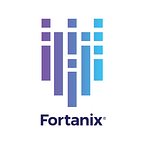Tokenization in Data Science: A Fundamental Mechanism for Data Security
Data science is a powerful tool because it can turn raw data into predictive insights, which drives progress and innovation.
Data Scientists and engineers manage diverse data types, including structured (e.g., databases, spreadsheets), unstructured (e.g., text, images), and semi-structured (e.g., JSON, XML) data. They use statistical and machine learning techniques to derive insights from these data sources.
They use different data sources to find patterns, correlations, marketing analytics, and customer insights that can be used to analyze and make decisions in industries such as healthcare, insurance, banking, environmental research, etc.
The data is gathered, cleaned, and explored before models are built, trained, and used to learn, forecast or make judgments.
While handling this vast amount of data, ensuring its security and compliance is essential.
One of the solutions is Tokenization.
In this blog, we will discuss the reasons behind the growing popularity of Data Science, the need for data security in this field, what tokenization is, how it is used in Data Science, and how it improves data security.
Growing Popularity of Data Science
The volume of data generated globally continues to skyrocket. As more devices, systems, and processes become digitized, the need to analyze and extract insights from this data will persist.
Secondly, there is a pressing need for industries to optimize their products and innovate faster to stay ahead of the competition. In healthcare, finance, and education, data science changes decisions regarding diagnoses, risk assessments, and scientific breakthroughs.
As a result, data scientists are required to analyze large datasets in continuous intervals and quickly. They rely on exponential data growth, digital technologies, improved computing resources, and software tools.
This trend has led to data-driven insights becoming a competitive advantage for companies that help in predictive analytics and proactive decision-making.
As data privacy and ethical considerations become more critical, data science will evolve to address these concerns.
The Need for Data Security in Data Science
- Data Transfer: Data scientists analyze private and confidential information, such as personal identification details, transaction records, medical histories, and proprietary business data. Data may be shared with external partners or researchers in collaborative environments. Because this data moves between different systems and geographies, it is highly vulnerable to cyberattacks. Loss of intellectual property can lead to a competitive disadvantage.
- Data Tampering: Data science groups manage sensitive information, and the absence of data security protocols increases the potential for data abuse. Employing data security measures prevents unauthorized modifications or tampering and helps uphold data integrity. If data is altered, it could lead to flawed analysis and poor decision-making.
- Regulatory Compliance: Many industries must compulsorily comply with strict data protection regulations, such as the General Data Protection Regulation (GDPR) in the European Union or, PCI DSS (Payment Card Industry Data Security Standard), or the Health Insurance Portability and Accountability Act (HIPAA). It means companies cannot move data without protecting it.
Tokenization as a Solution
Tokenization is a data security technique that replaces sensitive information with a unique identifier called a “token.” This token is typically a random string of characters without a direct relationship to the original data.
How Tokenization is used in Data Science
Tokenization methods can vary depending on the technique employed and the level of linguistic abstraction required for the specific task.
- Character Tokenization: Each character within the text is treated as a separate token. This fine-grained approach is useful for character-level language modelling or text generation tasks.
For instance, consider the input text “Customer A.” In character tokens, it would be represented as [“C”, “u”, “s”, “t”, “o”, “m”, “e”, “r”, “ “, “A”, “.”]
- Word Tokenization: Word tokenization involves segmenting the text into individual words, where each word in the sentence becomes an individual token.
For example, when tokenizing the input text “Customer A bought a Mutual Fund Bond,” the tokens would be [“Customer”, “A”, “bought”, “a”, “mutual”, “fund”, “bond”, “.”]
- Sentence Tokenization: Sentence tokenization, on the other hand, entails breaking the text into individual sentences. This process is commonly used in natural language processing tasks to split the input text into meaningful sentence-level units.
For instance, if we tokenize the input text “Customer A bought a Mutual Fund Bond. He plans to renew it yearly,” the resulting tokens would be [“Customer A bought a Mutual Fund Bond.”, “He plans to renew it yearly.”].
How Tokenization Improves Data Security in Data Science
- Make Data Unreadable: Tokenization replaces sensitive data, such as credit card numbers or personal identifiers, with unique tokens without inherent meaning. This ensures that even if unauthorized users gain access to the tokens, they cannot decipher the sensitive data.
- Reduced Data Exposure: When organizations tokenize sensitive data, users require access to view and manage the data. The limited access mitigates the risk of insider threats. Employees with authorized access can only interact with tokens. They cannot view a person’s identity, which reduces the potential for data misuse.
- Compliance with Regulations: Because there is limited data exposure and misuse, the tokenized data reduces the burden of meeting strict compliance regulations such as GDPR, PCI DSS, and HIPAA.
- Data Usability: Employees can use data for marketing analytics, behavior analytics, log access, business operations, and customer service without the need to view sensitive details.
A Must Read for CISO: Guide to Credit Card Tokenization
Download the free Tokenization Whitepaper
